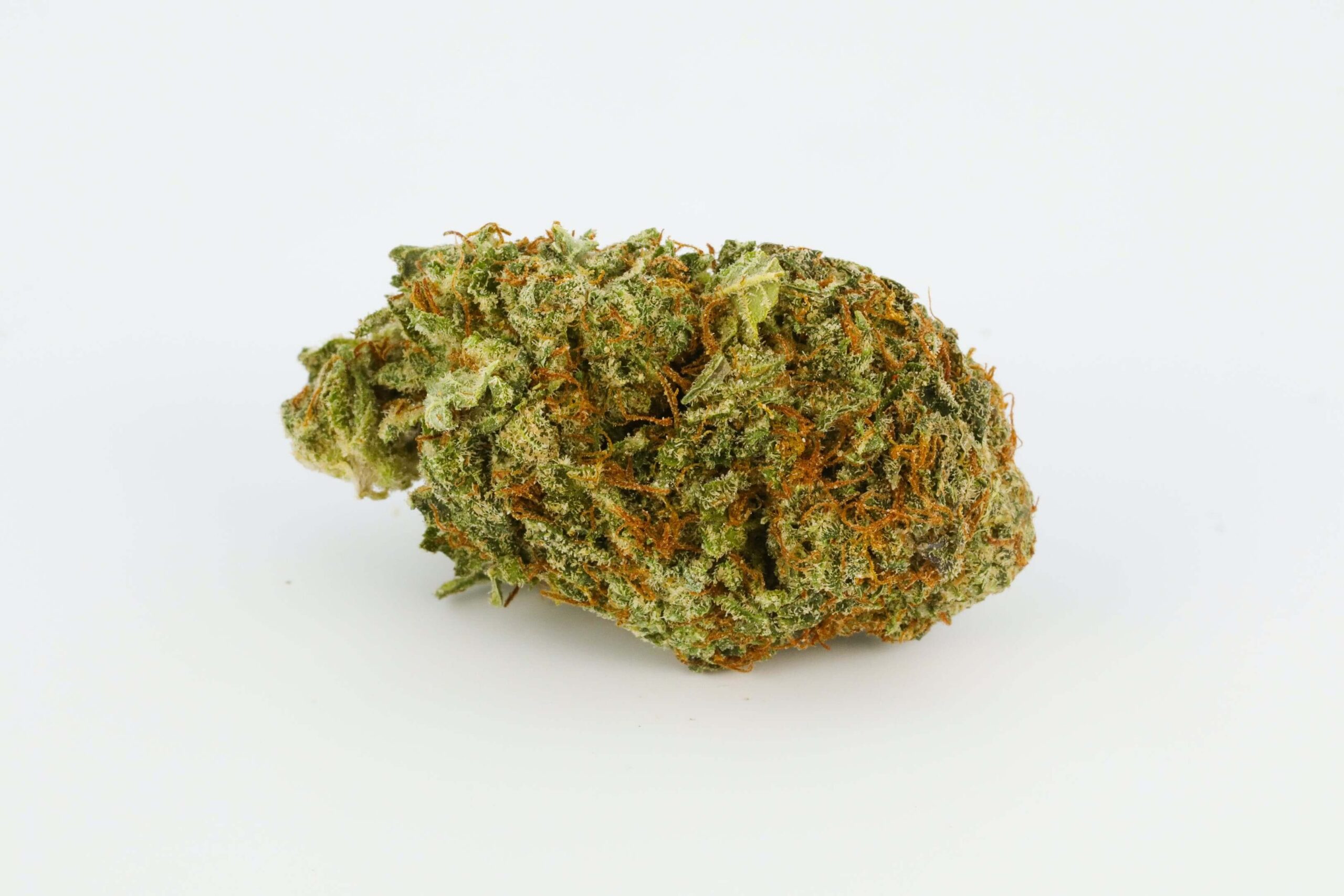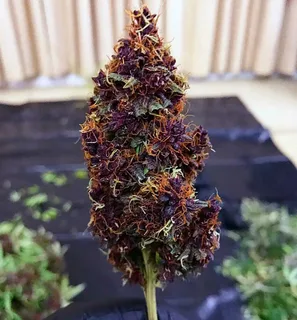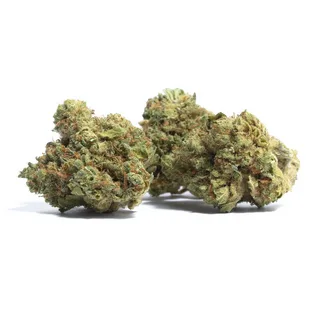Afghan Origin and History
Origin of the Strain
The term Afghan refers to a popular cannabis strain that originated from the Afghanistan. This country has been a significant producer and consumer of cannabis for centuries.
The history of cannabis in Afghanistan dates back to ancient times when it was used for medicinal, recreational, and spiritual purposes. The Taliban regime, which ruled the country from 1996 to 2001, prohibited the cultivation and trade of cannabis, but its use continued in various forms.
After the fall of the Taliban, the cultivation of cannabis resumed in some parts of Afghanistan. The strain that emerged during this time is often referred to as Afghani or Afghan. It is believed to have originated from a combination of local and international varieties.
The Afghani strain is characterized by its unique indica-dominant genetic makeup, which sets it apart from other strains. Its buds are typically dense and resinous, with a distinctive aroma that is often described as earthy or herbal.
The flavor profile of Afghani is complex and nuanced, with notes of spice, incense, and citrus. Its effects are known to be relaxing and sedating, making it a popular choice for evening use or for those who need to relieve stress and anxiety.
In terms of its THC content, the Afghani strain typically ranges from 15% to 20%, with some phenotypes reaching levels as high as 25%. Its CBD content is relatively low, making it more suitable for those seeking a potent indica-dominant experience.
Overall, the Afghani strain has become a popular choice among cannabis enthusiasts due to its unique genetic makeup and effects. Its rich history and cultural significance only add to its allure, making it a strain that is definitely worth trying for fans of indica-dominant varieties.
As with any cannabis strain, it’s essential to exercise caution when using Afghani and to follow local laws and regulations regarding the use and possession of cannabis. Additionally, be sure to consult with a healthcare professional before using this or any other cannabis product, especially if you have pre-existing medical conditions or are taking prescription medications.
The Afghan strain is a popular cannabis variety originating from Afghanistan, with some sources suggesting it may have been first cultivated in the region over 6,000 years ago. The exact origin remains unclear, but research suggests that ancient civilizations such as the Scythians and Bactrians may have contributed to its development.
The history of the Afghan strain of cannabis is a rich and complex one, with roots dating back thousands of years.
It is believed that cannabis was first cultivated in the region of modern-day Afghanistan over 6,000 years ago, although the exact origin remains unclear.
Research suggests that ancient civilizations such as the Scythians and Bactrians may have contributed to its development, with some sources suggesting that it may have been introduced to the region by nomadic tribes from Central Asia.
The Scythians were a group of nomads who roamed the steppes of modern-day Russia and Ukraine around 2000 BC, while the Bactrians were an ancient civilization that flourished in what is now Afghanistan and parts of Pakistan and India between 1800 and 500 BC.
Both the Scythians and Bactrians were known for their skills in agriculture and animal husbandry, which may have contributed to the development of cannabis cultivation in the region.
The ancient Greeks also traded with the civilizations of the Indus Valley and may have been aware of the medicinal and psychoactive properties of cannabis.
However, it wasn’t until the 19th century that cannabis began to be cultivated for its medicinal and recreational purposes in Europe and North America.
Key Players in the History of Afghan Cannabis
- The Scythians: A nomadic people who may have introduced cannabis to Afghanistan around 2000 BC.
- The Bactrians: An ancient civilization that flourished in what is now Afghanistan and parts of Pakistan and India between 1800 and 500 BC.
- The Greek Explorers: Who traded with the civilizations of the Indus Valley and may have been aware of the medicinal and psychoactive properties of cannabis.
Genetic Background
The history of Afghanistan dates back thousands of years, with various cultures and empires rising and falling over time.
Geographically, Afghanistan is located in South Asia and Central Asia, bordering countries such as Pakistan, Iran, Tajikistan, Uzbekistan, and Turkmenistan.
The region has been a crossroads for trade and cultural exchange between the East and West, with various civilizations leaving their mark on the country’s rich history.
Genetic Background
- The genetic background of Afghans is predominantly Central Asian with an admixture of Middle Eastern, South Asian, and European influences.
- A study on the genetics of Afghan populations found that they have a high percentage of ancestry from Central Asia, as well as significant contributions from the Near East and Europe.
- Another study suggested that Afghans are genetically closer to Iranian and Pakistani populations than to Indians or Europeans.
Cultural History
Afghanistan has a rich cultural heritage, with various empires rising and falling over time, including the Achaemenid Empire, the Persian Empire, the Greco-Bactrian Kingdom, and the Mongol Empire.
The country has been influenced by various cultures, including Zoroastrianism, Buddhism, and Islam, which have contributed to its unique cultural identity.
Genetic Influence from Ancient Civilizations
- Research suggests that the genetic makeup of modern Afghans is influenced by ancient civilizations such as the Persians, Greeks, and Mongols.
- The Aryan migration into South Asia over 3,500 years ago had a significant impact on the genetics of the region, including present-day Afghanistan.
Understanding the genetic background and cultural history of Afghans is essential to appreciating the complexities and nuances of their society, particularly when considering topics such as genetics and weed strain information.
Studies indicate that the Afghan strain is a hybrid of landrace plants from various regions, including Kush and Hindu Kush. This genetic diversity has led to a unique combination of characteristics that distinguish it from other strains.
The origins of the Afghan strain can be traced back to the mountainous regions of Afghanistan and Pakistan, specifically in the Hindu Kush Mountains.
Studies suggest that this strain is a hybrid of various landrace plants from different regions, including the ancient cannabis varieties known as Kush and Hindu Kush.
These landraces have been cultivated for thousands of years, with some estimates suggesting they date back to 400 BCE or even earlier.
The genetic diversity resulting from these ancient cross-breedings has contributed to the unique characteristics that distinguish Afghan from other cannabis strains.
One of the most notable features of the Afghan strain is its high resin production, which is due in part to the high concentration of trichomes on its buds.
These trichomes are responsible for the strain’s potent effects and aroma, with many users describing it as having a pungent, earthy flavor.
The high THC content of Afghan has also made it a favorite among cannabis enthusiasts, particularly those who value its intense and long-lasting effects.
Despite being widely available in dispensaries worldwide, the true origins of Afghan remain shrouded in mystery, with some speculating that it may be an heirloom strain passed down through generations of Afghan farmers.
Others propose that it may have been bred by international cannabis companies seeking to capitalize on the global popularity of this strain.
Cannabis Properties and Effects
Morphology and Growth Characteristics
The cannabis strain known as Afghani or Afghan originates from the Hindu Kush mountain region of Afghanistan and Pakistan. It has been a staple for decades among hashish enthusiasts due to its high resin content, rich aroma, and potent effects.
Afghan is an indica-dominant strain with a high THC content, typically ranging between 15-20%. The plants are characterized by their large, compact buds that grow close together on the branches. Their broad leaves are dark green in color with a unique wrinkled texture, similar to those found on the Afghan cannabis varieties.
The effects of Afghani are generally sedative and relaxing, often referred to as ‘body-high’ or ‘stone’. This is due to its high THC levels combined with higher CBD levels compared to other strains. Users report feeling a deep sense of relaxation, calmness, and sleepiness after consuming Afghan.
Due to its potency, this strain is generally used for medicinal purposes such as pain relief, stress reduction, and insomnia treatment. However, it’s essential to note that Afghani can cause dizziness or disorientation in new users due to its high THC content.
Afghan plants grow relatively slowly but require consistent moisture levels during the vegetative stage. They thrive well under a Mediterranean climate with warm temperatures between 18-25°C (64-77°F) and adequate humidity levels. As an indica-dominant strain, Afghan tends to have shorter flowering times compared to sativa or hybrid strains.
The plants can reach up to 60-100 cm in height when mature and produce a decent yield of compact buds with a relatively small leaf area. Growers often report high resin production and trichome density on the leaves and flowers, resulting in higher THC levels.
The Afghan strain is known for its dense, compact buds with an earthy, sweet aroma. Plants grown from Afghan seeds tend to be shorter in stature than those of other varieties, making them ideal for smaller growing spaces.
The Afghan strain of cannabis is a popular variety known for its unique characteristics and effects on the human body.
One of the distinctive features of Afghan plants is their dense and compact buds, which are often accompanied by an earthy and sweet aroma that is pleasing to the senses.
This strain has gained popularity among growers due to its relatively short stature compared to other cannabis varieties. This makes it an ideal choice for smaller growing spaces or those who prefer a more contained plant size.
The Afghan strain is often described as having a relaxing and soothing effect on the body, which can lead to feelings of calmness and tranquility.
It’s also known to provide relief from stress and anxiety, making it a popular choice for individuals seeking to unwind after a long day.
In terms of its THC content, Afghan plants are reported to have an average potency level, ranging from 12-20% depending on the specific growing conditions and cultivation methods used.
Medical users often turn to Afghan for relief from various symptoms associated with chronic pain, insomnia, and muscle spasms.
The strain is also believed to possess anti-inflammatory properties, which can help alleviate symptoms of arthritis and other inflammatory-related conditions.
However, it’s worth noting that the Afghan strain may not be as potent or effective for individuals seeking a more intense psychoactive experience. As such, users should exercise caution when using this variety, especially if they are new to cannabis consumption.
The Afghan strain is often recommended for nighttime use due to its relaxing and calming effects, which can promote a restful night’s sleep.
Overall, the Afghan strain offers a unique combination of physical and mental relaxation, making it a popular choice among growers and users alike.
Psychoactive Effects
Cannabis, commonly known as marijuana or weed, has been used for medicinal and recreational purposes for thousands of years. It contains over 100 chemical compounds called cannabinoids, with tetrahydrocannabinol (THC) being the most well-known psychoactive compound.
The THC in cannabis is responsible for its intoxicating effects, which can range from mild euphoria to intense anxiety or paranoia, depending on the individual’s tolerance and dosage. The effects of THC are typically felt within 10-30 minutes after consumption and can last anywhere from a few hours to several days.
In terms of psychoactive effects, cannabis has been reported to alter perception, mood, and cognitive function. Users may experience changes in their sense of time and space, as well as alterations in their visual and auditory perceptions. Some users also report increased creativity, energy, and sociability, while others experience anxiety, paranoia, or fear.
The effects of cannabis can vary depending on the individual’s characteristics, such as age, sex, weight, and tolerance level, as well as factors like dosage, consumption method (smoking, vaping, edibles), and the presence of other substances. Additionally, different strains of cannabis have unique cannabinoid profiles, which can impact their effects.
Afghan Kush, also known as Afghan or Afghanistan Weed, is a popular strain of cannabis that originated in the Hindu Kush region of Afghanistan. It is a dense, compact plant with a high THC content (typically between 15-20%) and a relaxing, sedating effect. Users report feeling calm, relaxed, and sleepy after consuming this strain, often accompanied by pain relief and increased appetite.
Overall, cannabis effects can range from mild to intense and vary greatly depending on individual factors, including strain composition, dosage, and consumption method. While some people use it for recreational purposes, others rely on it for medicinal benefits, such as pain relief, anxiety reduction, or sleep aid. As with any substance, responsible use and awareness of the potential effects are essential.
Afghan weed is renowned for its potent psychoactive effects, attributed to its high THC content (typically ranging between 1525%). Users often report feelings of relaxation, euphoria, and increased sociability. The strain’s moderate CBD levels contribute to its therapeutic potential, with some users citing benefits in reducing pain and anxiety.
Cannabis, also known as marijuana or weed, has been a popular substance for centuries due to its medicinal and psychoactive properties.
The plant contains over 100 different chemical compounds, known as cannabinoids, with the two most well-known being tetrahydrocannabinol (THC) and cannabidiol (CBD).
THC is responsible for the psychoactive effects of cannabis, producing feelings of euphoria and relaxation in users. The potency of THC can vary significantly between different strains of cannabis, with Afghan weed being renowned for its potent psychoactive effects.
Afghan weed typically has a high THC content, ranging from 15-25%, which is significantly higher than many other strains of cannabis.
The high THC content in Afghan weed contributes to its ability to produce feelings of relaxation and euphoria in users. Many people use Afghan weed as a recreational substance, enjoying the social effects it produces and the sense of well-being it brings.
However, the THC content also has therapeutic potential. Some users report benefits such as reduced pain and anxiety when using Afghan weed, likely due to the interaction between THC and the body’s own endocannabinoid system.
In addition to its high THC content, Afghan weed also contains moderate levels of CBD. CBD is known for its medicinal properties and has been studied extensively for its potential therapeutic applications, including reducing inflammation and pain.
The combination of high THC and moderate CBD levels in Afghan weed makes it a versatile substance with both recreational and medicinal uses.
- Fatso Weed Strain Information - September 16, 2024
- Guava Runtz Weed Strain Information - September 16, 2024
- Han Solo Burger Weed Strain Information - September 16, 2024









